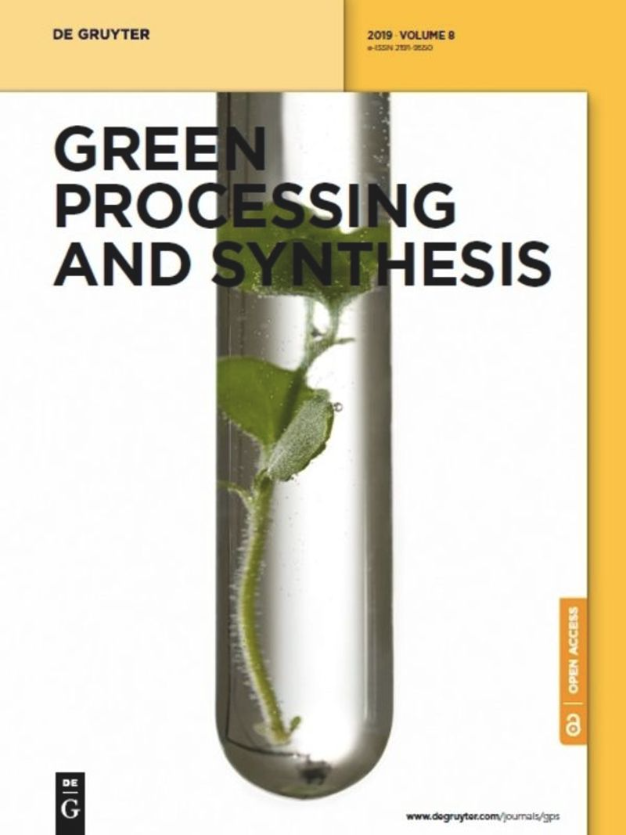治疗疟疾的银纳米晶体的绿色纳米结构及其对肾Vero细胞系的细胞毒性作用
IF 3
4区 工程技术
Q2 CHEMISTRY, MULTIDISCIPLINARY
引用次数: 1
摘要
摘要本研究重点测试了制造的银纳米颗粒(AgNPs)对疟疾病原体恶性疟原虫和疟疾媒介斯氏按蚊的抗药性,使用的是长叶马杜卡的植物滤液。用长叶M.longifolia叶提取物合成AgNPs,然后用几种物理化学方法测定其特性。为了评估绿色产生的AgNP治疗的有效性,进行了A.stephensi的杀蚊活性、Vero细胞的细胞毒性测定和抗疟原虫活性测定。生物合成的AgNPs对疟疾媒介斯氏疟原虫的幼虫和蛹毒性在低剂量的实验室环境中是90%有希望的(10 ppm)。当在非洲绿猴肾细胞上进行测试时,发现生物合成材料的细胞毒性效应不适当地破坏了多达100 g·mL−1。评价了AgNPs对恶性疟原虫株的抗疟作用。在100 ppm对疟原虫的抑制率最高(80.4%),AgNPs对恶性疟原虫具有显著的体外抗疟活性。我们的研究结果表明,生物合成的AgNPs可能是一种新型抗疟剂,对环境更安全,也是蚊子传播感染的屏障。AgNP合成在对抗疟疾中的图解。本文章由计算机程序翻译,如有差异,请以英文原文为准。
Green nanoarchitectonics of the silver nanocrystal potential for treating malaria and their cytotoxic effects on the kidney Vero cell line
Abstract This study focused on testing manufactured silver nanoparticles (AgNPs) against the malaria pathogen Plasmodium falciparum and the malaria vector Anopheles stephensi using the plant filtrate from Madhuca longifolia. The M. longifolia leaf extracts were used to synthesize the AgNPs, which were then subjected to several physicochemical methods to determine their characteristics. To evaluate the effectiveness of the green produced AgNP therapy, the mosquitocidal activity of A. stephensi, cytotoxicity assay in Vero cells, and antiplasmodial activity assay were performed. The larval and pupal toxicity of biosynthesized AgNPs against the malarial vector A. stephensi is 90% promising in laboratory settings at low dosages (10 ppm). When tested on African green monkey kidney cells, the cytotoxic effect of biosynthesized materials was found to be inappropriately damaging up to 100 g·mL−1. The antimalarial efficacy of AgNPs was evaluated against P. falciparum strains. The parasites that were restrained by AgNPs at 100 ppm had the highest parasitemia restraint rate (80.4%). AgNPs then showed significant in vitro antimalarial activity against P. falciparum. Our findings suggested that the biosynthesized AgNPs might function as a novel antimalarial agent that is both safer for the environment and a barrier to infections spread by mosquitoes. Graphical abstract Illustration of AgNP synthesis in the fight against malaria.
求助全文
通过发布文献求助,成功后即可免费获取论文全文。
去求助
来源期刊

Green Processing and Synthesis
CHEMISTRY, MULTIDISCIPLINARY-ENGINEERING, CHEMICAL
CiteScore
6.70
自引率
9.30%
发文量
78
审稿时长
7 weeks
期刊介绍:
Green Processing and Synthesis is a bimonthly, peer-reviewed journal that provides up-to-date research both on fundamental as well as applied aspects of innovative green process development and chemical synthesis, giving an appropriate share to industrial views. The contributions are cutting edge, high-impact, authoritative, and provide both pros and cons of potential technologies. Green Processing and Synthesis provides a platform for scientists and engineers, especially chemists and chemical engineers, but is also open for interdisciplinary research from other areas such as physics, materials science, or catalysis.
 求助内容:
求助内容: 应助结果提醒方式:
应助结果提醒方式:


